Trunk-Based Development (TBD) is a software development methodology characterized by the practice of maintaining a single, central codebase branch, often referred to as the “trunk” or “main” branch. In TBD, developers work collaboratively on this primary branch, regularly integrating their code changes into it. This approach stands in contrast to traditional methods that involve the creation of long-lived feature branches for individual development tasks.
The core principle of TBD is frequent integration, encouraging developers to merge their code into the main branch as often as possible, sometimes even multiple times a day. By doing so, TBD aims to reduce integration conflicts, streamline the development process, and promote continuous integration and delivery.
One notable feature of Trunk-Based Development is the use of feature flags. Feature flags allow developers to hide or enable specific features within the codebase, even if they are not yet fully developed or tested. This enables a controlled and gradual rollout of new functionality to end-users, providing flexibility in managing feature releases.
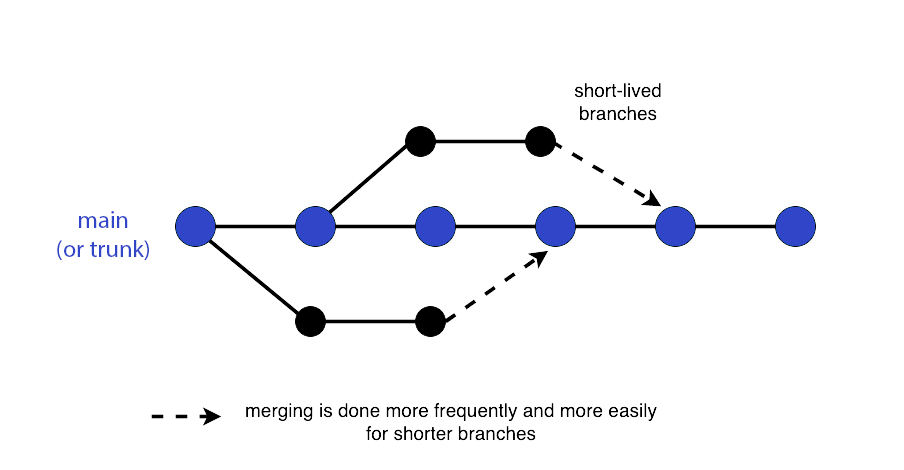
The Evolution of Software Development Methodologies
Software development methodologies have evolved significantly over the years to meet the changing needs of the industry, adapt to emerging technologies, and improve the efficiency and quality of software development processes. Below is an overview of the key stages in the evolution of software development methodologies:
Waterfall Model (1970s)
The Waterfall model was one of the earliest methodologies.
It follows a linear and sequential approach with distinct phases such as requirements, design, implementation, testing, deployment, and maintenance.
The model assumes that each phase must be completed before moving on to the next.
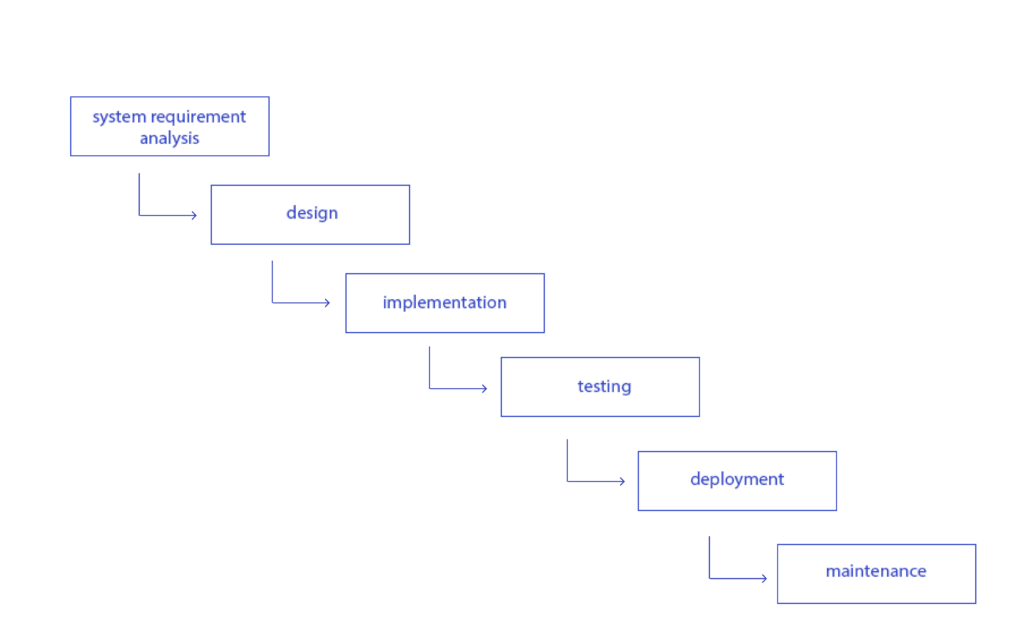
Iterative and Incremental Development (1980s)
Recognizing the limitations of the Waterfall model, iterative and incremental development methodologies like the Rational Unified Process (RUP) emerged.
These methodologies introduced cycles of development and continuous refinement of software.
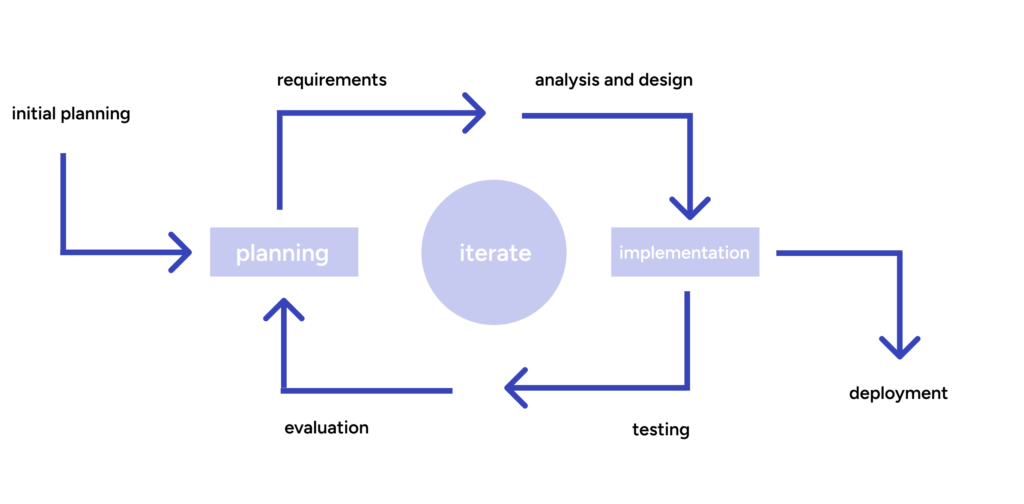
Agile Manifesto (2001)
A significant shift occurred with the Agile Manifesto, which emphasized values such as individuals and interactions, working software, customer collaboration, and responding to change.
Agile methodologies, including Scrum, Kanban, and Extreme Programming (XP), prioritize flexibility, customer feedback, and iterative development.
Lean Software Development (2000s)
Inspired by manufacturing principles, Lean software development focuses on eliminating waste, improving efficiency, and delivering value.
It emphasizes delivering the most valuable features first and continuous improvement.
DevOps (2010s)
DevOps emerged as a methodology to bridge the gap between development and operations teams.
It promotes collaboration, automation, and continuous integration and delivery (CI/CD), enabling faster and more reliable software deployments.

Continuous Integration/Continuous Delivery (CI/CD)
CI/CD became a critical part of modern software development, allowing for automated testing and rapid, reliable deployment. CI/CD pipelines enable frequent code integration and continuous delivery to production environments.
Ready to streamline your software delivery? Get started with CI/CD now!
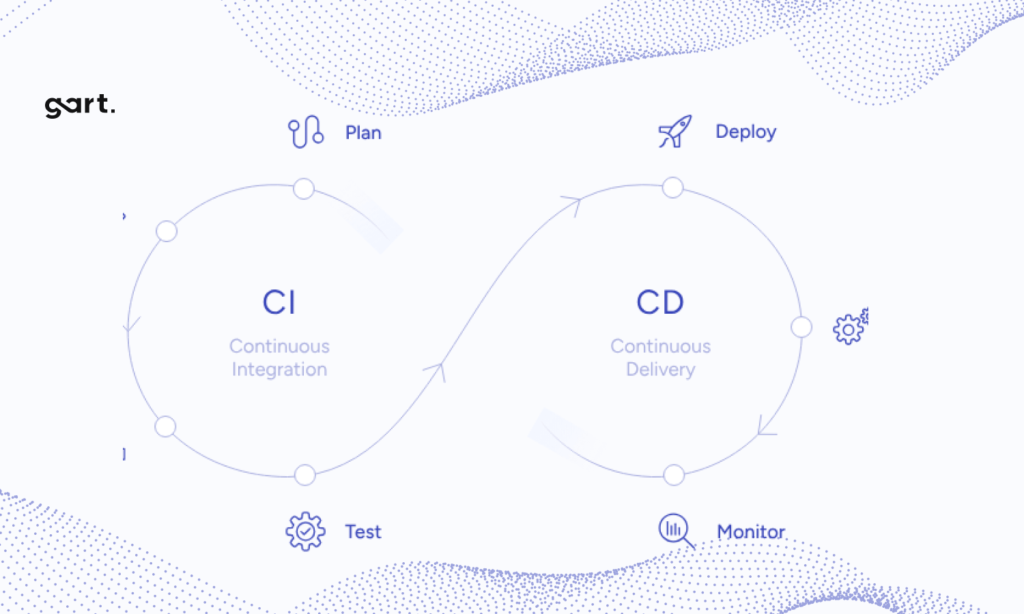
Trunk-Based Development (TBD)
Trunk-Based Development is an approach that encourages frequent integration of code changes into a central branch, reducing the use of long-lived feature branches.
TBD promotes faster development cycles and a focus on code quality.
Microservices Architecture (2010s)
The rise of microservices architecture involves breaking down large applications into smaller, independent services that can be developed and deployed separately.
This approach enhances scalability, agility, and maintainability.
Serverless Computing (2010s)
Serverless computing eliminates the need for managing infrastructure, allowing developers to focus solely on code. It simplifies deployment and scaling of applications.
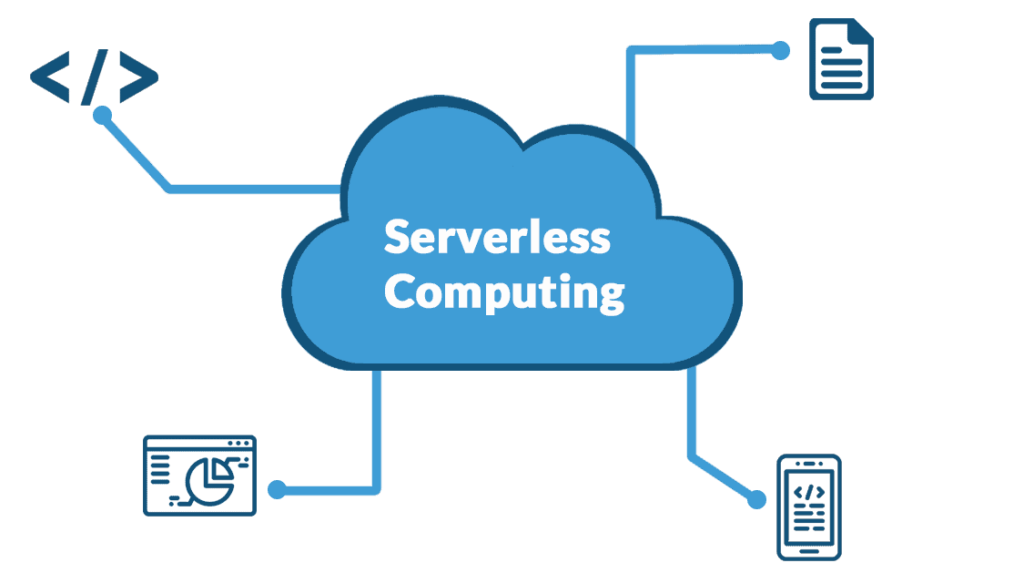
No-Code/Low-Code Development (2020s)
No-code/low-code platforms enable people with little to no coding experience to build software applications.
These platforms accelerate development but may pose challenges in complex projects.
The evolution of software development methodologies reflects a continual effort to enhance efficiency, quality, and collaboration in software development. The choice of methodology depends on project requirements, team dynamics, and the specific challenges faced by development teams in an ever-changing technological landscape.
? Ready to boost your development efficiency? Embrace Trunk-Based Development today and experience faster integration, reduced conflicts, and accelerated feature delivery. Start your journey to streamlined development now!
Key Principles of Trunk-Based Development
Trunk-Based Development (TBD) is underpinned by several key principles that define its approach to software development. These principles emphasize collaboration, rapid integration, and code quality. Here are the core principles of TBD:
Single Integration Branch
In TBD, there is typically a single, central branch known as the “trunk” or “main” branch. All development work is integrated directly into this branch.
The use of a single integration branch minimizes complexity, reduces the risk of integration conflicts, and simplifies the development process.
Frequent Integration
TBD encourages developers to integrate their code changes into the main branch as frequently as possible, often multiple times a day.
Frequent integration ensures that code changes are continually tested and validated, reducing the likelihood of defects and integration problems.
Short-Lived Feature Flags
Feature flags or toggles are a fundamental component of TBD. They allow developers to selectively enable or disable specific features within the codebase.
Feature flags facilitate controlled feature releases, allowing unfinished or experimental features to remain hidden from users until they are fully ready.
Continuous Testing
Continuous testing is a cornerstone of TBD. Developers are expected to write automated tests, including unit tests, integration tests, and potentially end-to-end tests.
Testing at every stage of development ensures that code changes do not introduce regressions and that the software remains reliable and stable.
These principles collectively define the core of Trunk-Based Development, promoting a development culture that values collaboration, rapid integration, code quality, and the ability to respond quickly to changing requirements and user feedback. By adhering to these principles, development teams can harness the full potential of TBD and deliver software with speed, reliability, and agility.
Trunk-Based Development Table
| Aspect | Description |
|---|---|
| Definition | A software development methodology where developers work primarily on a single code branch called the “trunk.” |
| Purpose | Accelerates integration, reduces merge conflicts, and facilitates faster feature delivery. |
| Main Principles | Frequent code integration, continuous testing, and maintaining a stable main branch. |
| Benefits | Faster integration, reduced risk of conflicts, improved collaboration, and simplified maintenance. |
| Challenges | Risk of breaking the main branch, diligent code reviews, reliance on automated testing, not suitable for all projects. |
| Supporting Practices | Continuous Integration (CI/CD), automated testing, code reviews, feature flags. |
| Transition from Other Strategies | Gradual adoption, training, and tooling enhancements. |
| Role of CI/CD | Essential for automating integration, testing, and deployment to ensure trunk stability. |
| Applicability to Remote Teams | Feasible with appropriate tools and communication practices. |
| Real-World Examples | Adopted by companies like Google, Facebook, and Amazon for large-scale projects. |
| Impact on Release Management | Simplifies release management with always-deployable main branch. |
| Alternatives/Variations | Branch by Abstraction, GitHub Flow, Gitflow. |
| Suitable for Open Source Projects | Can be adapted with additional coordination for open-source projects. |
Implementing Trunk-Based Development
Implementing Trunk-Based Development (TBD) requires a combination of practices, tools, and cultural adjustments to ensure its successful adoption. Below, we outline key aspects of how to implement TBD effectively:
Version Control System Selection
Choose an appropriate version control system (VCS) that supports branching and merging efficiently. Git is a popular choice for implementing TBD due to its robust branching capabilities.
Automated Build and Deployment Pipelines
Set up automated build and deployment pipelines that streamline the integration and delivery process.
These pipelines should include steps for building, testing, and deploying code changes to staging and production environments.
Continuous Integration (CI)
Implement CI practices, where code changes are automatically built and tested upon integration into the main branch.
CI tools can help catch defects early in the development cycle, ensuring that the codebase remains stable.
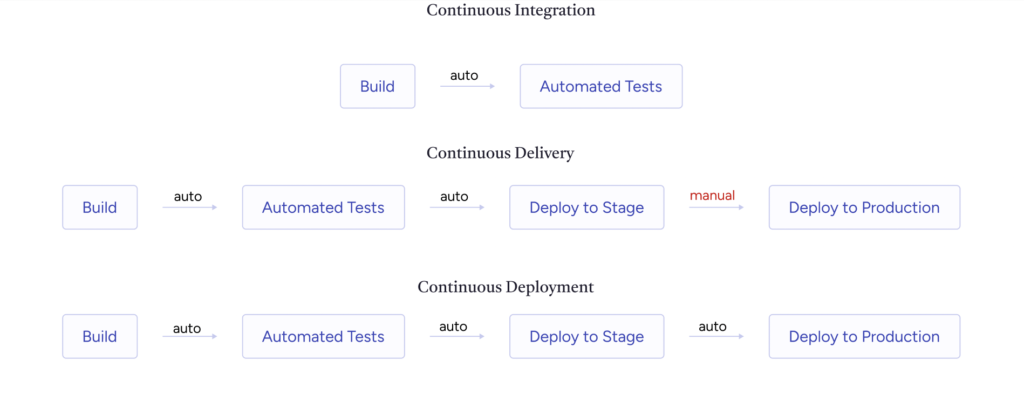
Continuous Deployment (CD)
If appropriate for your project and organization, integrate continuous deployment practices into your workflow.
CD automates the deployment of code changes to production environments, reducing manual intervention and accelerating delivery.
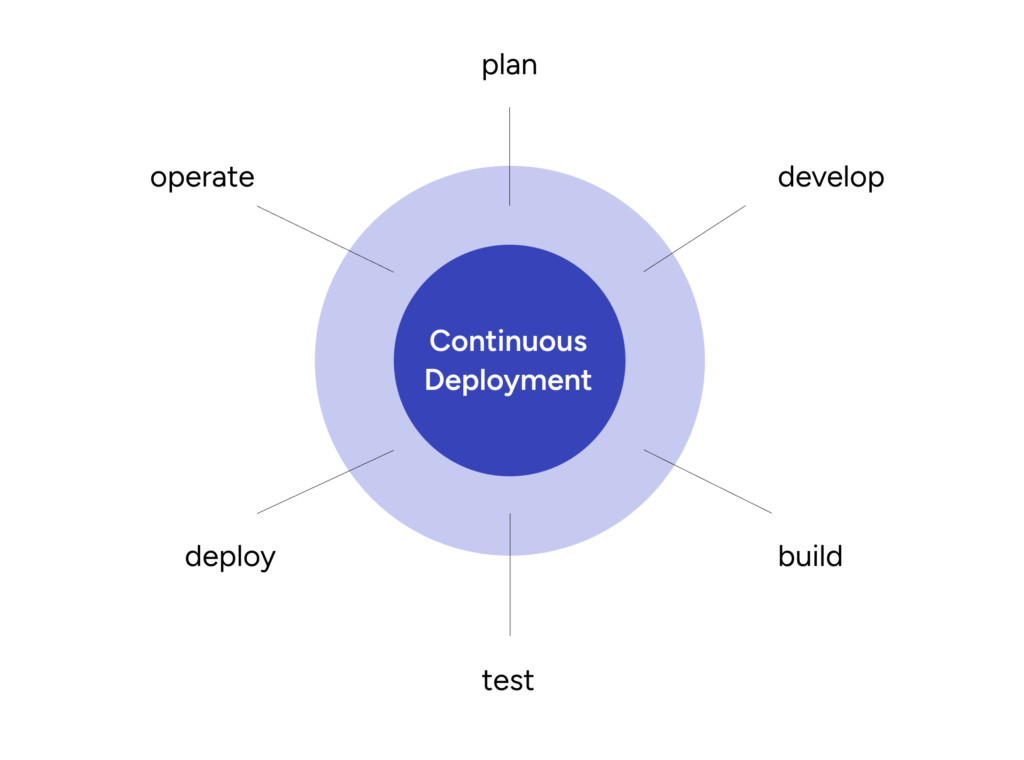
Feature Flags and Toggles
Incorporate feature flags or toggles into your codebase to enable the selective activation or deactivation of specific features.
Ensure that your codebase and infrastructure support feature flag management effectively.
Development Environment Isolation
Encourage developers to maintain isolated development environments to prevent interference between different features or code changes.
Containerization or virtualization technologies can help achieve this isolation.
Testing Strategy
Develop a comprehensive testing strategy that includes unit testing, integration testing, and end-to-end testing.
Automated testing should be a core part of the development process to catch issues early.
Monitoring and Rollback Plans
Implement robust monitoring solutions to continuously track the performance and health of your production systems.
Have well-defined rollback plans in place to quickly revert to a stable state in case of unexpected issues.
Documentation and Best Practices
Document your TBD processes, coding standards, and best practices to ensure consistency and facilitate knowledge sharing among team members.
Make this documentation easily accessible to all team members.
Training and Onboarding
Train team members in the principles and practices of TBD, especially if it’s a new approach for your organization.
Develop an onboarding process to help new team members quickly adapt to the TBD workflow.
Implementing Trunk-Based Development requires commitment, ongoing communication, and a willingness to embrace change. It’s important to tailor the approach to your team’s specific needs and project requirements while keeping a focus on collaboration, automation, and code quality. By doing so, you can harness the benefits of TBD and enhance your software development process.
Overall, Trunk-Based Development places a strong emphasis on collaboration, continuous testing, automation, and rapid code integration. It is a methodology suited for teams aiming to accelerate development cycles, maintain code quality, and respond quickly to changing requirements and market demands.
Contact us now to get started on your journey to DevOps excellence!









